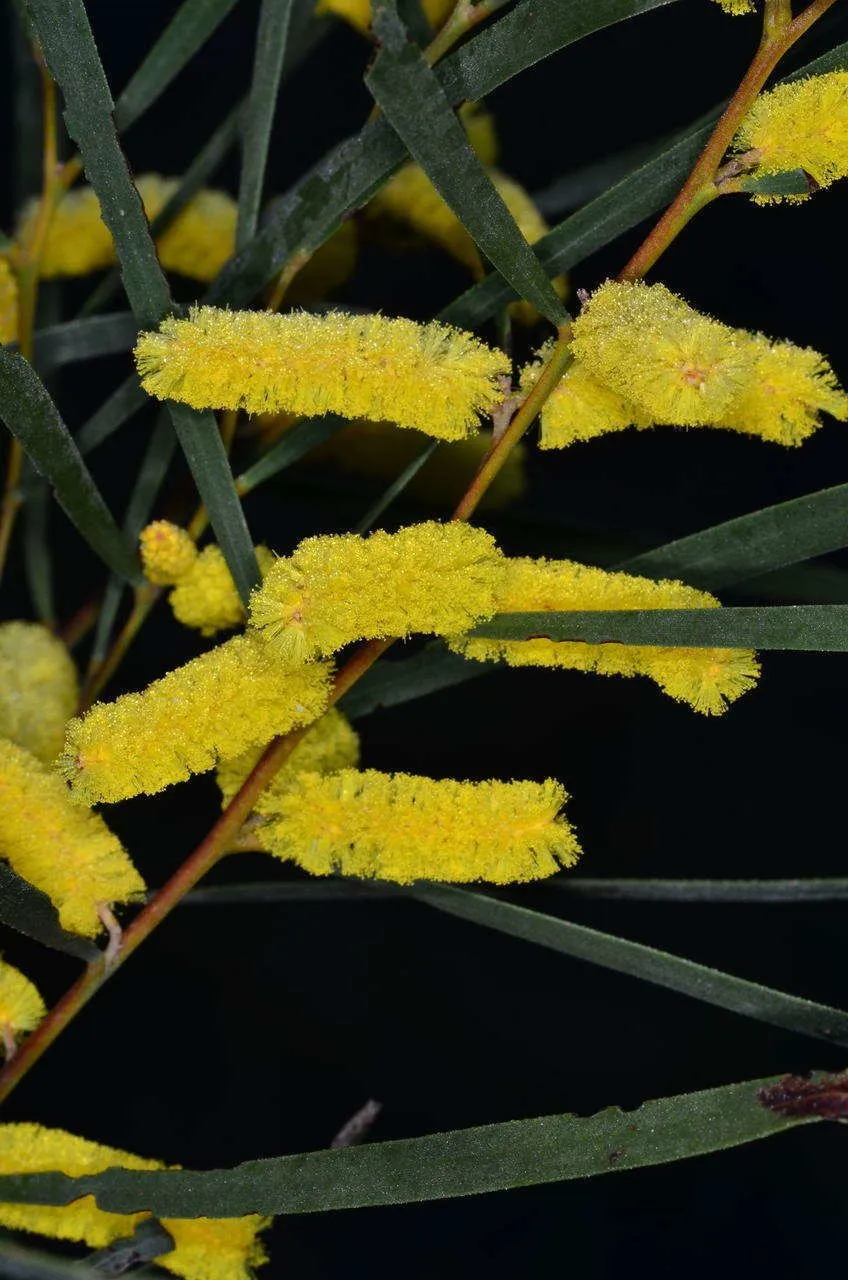
Author: A.Cunn.
Bibliography: B.Field, Geogr. Mem. New South Wales: 345 (1825)
Year: 1825
Status: accepted
Rank: species
Genus: Acacia
Vegetable: Unknown
Observations: New South Wales to N. Victoiria
Brown lancewood, scientifically known as Acacia doratoxylon, is a captivating species of plant that belongs to the Fabaceae family, commonly referred to as the legume, pea, or bean family. This intriguing plant species was first documented by the celebrated botanist A. Cunningham, whose work was encapsulated in B. Field’s “Geographical Memoirs on New South Wales” in the year 1825.
Native to Australia, Brown lancewood is primarily found in the regions of New South Wales extending to Northern Victoria. It is adapted to the specific climatic and soil conditions prevalent in these areas, often thriving in well-drained soils and withstanding periods of drought—an admirable trait that makes it a resilient member of its genus.
The morphology of Acacia doratoxylon is quite distinct and lends itself to easy identification. It is typically characterized by slender, lance-shaped leaves, which contribute to its common name. The foliage is usually a deep green, which can provide a stark yet visually appealing contrast against its bark and the surrounding flora. When in bloom, Brown lancewood is adorned with small, yellow globular flowers, a hallmark of many Acacia species, which attract a variety of pollinators, subsequently aiding in the health of its ecosystem.
Functionally, Acacia doratoxylon plays an important role in its native habitat. Like other members of the Fabaceae family, it has the ability to fix nitrogen in the soil, thereby enriching it and making it more fertile for other plant species. This ecological contribution underlines its significance beyond mere aesthetics.
In cultivation or landscapes, Brown lancewood can be utilized for both ornamental purposes and functional applications such as windbreaks or erosion control, thanks to its hardiness and adaptability. Gardeners and landscapers prize it for its low maintenance and resilience against adverse conditions.
In summary, the Brown lancewood (Acacia doratoxylon) is not only a botanical marvel due to its striking appearance and adaptive qualities but also a crucial component of the ecosystems it inhabits in New South Wales and Northern Victoria. As we continue to study and appreciate such species, we uncover the intricate balances they maintain and the beauty they bring to our natural world.
Eng: brown lancewood, lancewood, spearwood, currawang
En: Brown lancewood, Lancewood, Spearwood, Currawang
© copyright of the Board of Trustees of the Royal Botanic Gardens, Kew.
© copyright of the Board of Trustees of the Royal Botanic Gardens, Kew.
© copyright of the Board of Trustees of the Royal Botanic Gardens, Kew.
Taken May 11, 2021 by arlas (cc-by-sa)
Taken May 11, 2021 by arlas (cc-by-sa)
Taken May 11, 2021 by arlas (cc-by-sa)
Taken May 11, 2021 by arlas (cc-by-sa)
Taken May 11, 2021 by arlas (cc-by-sa)
Taken May 11, 2021 by arlas (cc-by-sa)
Taken May 11, 2021 by arlas (cc-by-sa)
Taken Mar 15, 2013 by Photoflora – Benoit BOCK (©)
Family: Myrtaceae Author: (F.Muell.) K.D.Hill & L.A.S.Johnson Bibliography: Telopea 6: 402 (1995) Year: 1995 Status:…
Family: Rubiaceae Author: Pierre ex A.Froehner Bibliography: Notizbl. Bot. Gart. Berlin-Dahlem 1: 237 (1897) Year:…
Family: Sapindaceae Author: Koidz. Bibliography: J. Coll. Sci. Imp. Univ. Tokyo 32(1): 38 (1911) Year:…
Family: Asteraceae Author: A.Gray Bibliography: Pacif. Railr. Rep.: 107 (1857) Year: 1857 Status: accepted Rank:…
Family: Fabaceae Author: Medik. Bibliography: Vorles. Churpfälz. Phys.-Ökon. Ges. 2: 398 (1787) Year: 1787 Status:…
Family: Aspleniaceae Author: (Cav.) Alston Bibliography: Bull. Misc. Inform. Kew 1932: 309 (1932) Year: 1932…